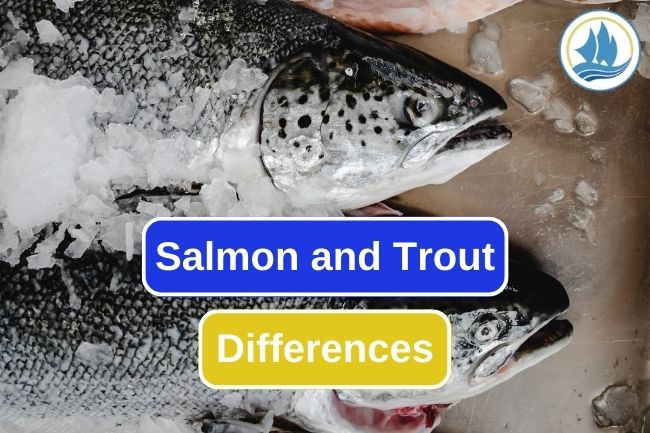5 Ways to Tell Salmon and Trout Apart
By. Nevanda - 05 May 2023
kelolalaut.com - Salmon is a species of fish that is native to the North Atlantic and Pacific oceans. It is a popular food fish that is known for its distinct flavor and nutritional value. Salmon is a good source of protein, omega-3 fatty acids, and vitamins B12 and D. It has been linked to a number of health benefits, including reducing the risk of heart disease, improving brain function, and reducing inflammation.
Trout is a species of freshwater fish that is native to rivers, streams, and lakes in North America, Europe, and Asia. It is a popular game fish that is also widely used for food. Trout is a good source of protein, omega-3 fatty acids, and vitamins B12 and D. It has a firm, flaky texture and a mild, slightly nutty flavor. Like salmon, trout has been linked to a number of health benefits, including reducing the risk of heart disease and improving brain function.
Read also: This Is What Marine Collagen Does For Human
Salmon and trout are both species of fish that belong to the same family, Salmonidae, and have many similarities in terms of appearance and taste. However, there are some key differences between the two.
1. Habitat
Salmon are usually found in the sea and migrate to freshwater rivers and streams to spawn, whereas trout live in freshwater streams and rivers.
2. Size
Salmon tend to be larger than trout, with some species growing up to several feet in length and weighing over 100 pounds. Trout, on the other hand, are typically smaller, with the largest species reaching about 4 feet in length and weighing around 50 pounds.
Read also: Nutrition Profile Between Marine and Freshwater Fish
3. Color
Salmon have a silver-blue color with black spots on their back and upper tail fin, while trout have a more vibrant coloration that varies depending on the species and environment. Rainbow trout have a distinctive pink stripe along their sides, while brown trout have a more mottled appearance.
4. Taste
Both salmon and trout have a similar mild, slightly sweet taste, but salmon tend to have a richer flavor and higher fat content.
5. Nutritional value
Both salmon and trout are a good source of protein and omega-3 fatty acids, but salmon typically contains more omega-3s per serving.
Overall, while there are similarities between salmon and trout, the differences in habitat, size, color, taste, and nutritional value make them distinct species.
Read also: Here Are Salmon Nutrition Content As A Healthy Food
 and Employee Productivity on the Demersal Fish Processing Floor.jpg)
The Correlation Between Occupational Health and Safety (OHS) and Employee Productivity on the Demersal Fish Processing Floor

Human Resource Management Challenges and Training Needs in Implementing HACCP Quality Standards within the Fish Processing Industry

The Legal Shark Value Chain: Identifying Critical Control Points for Cost Efficiency and Value Enhancement from Catch to Consumer

Global Trust Across Three Segments: How the HACCP System Ensures Premium Quality for Demersal, Pelagic Fish, and Legal Shark Product Utilization
.jpg)


 in Meeting Global Protein Demand Sustainably.jpg)
